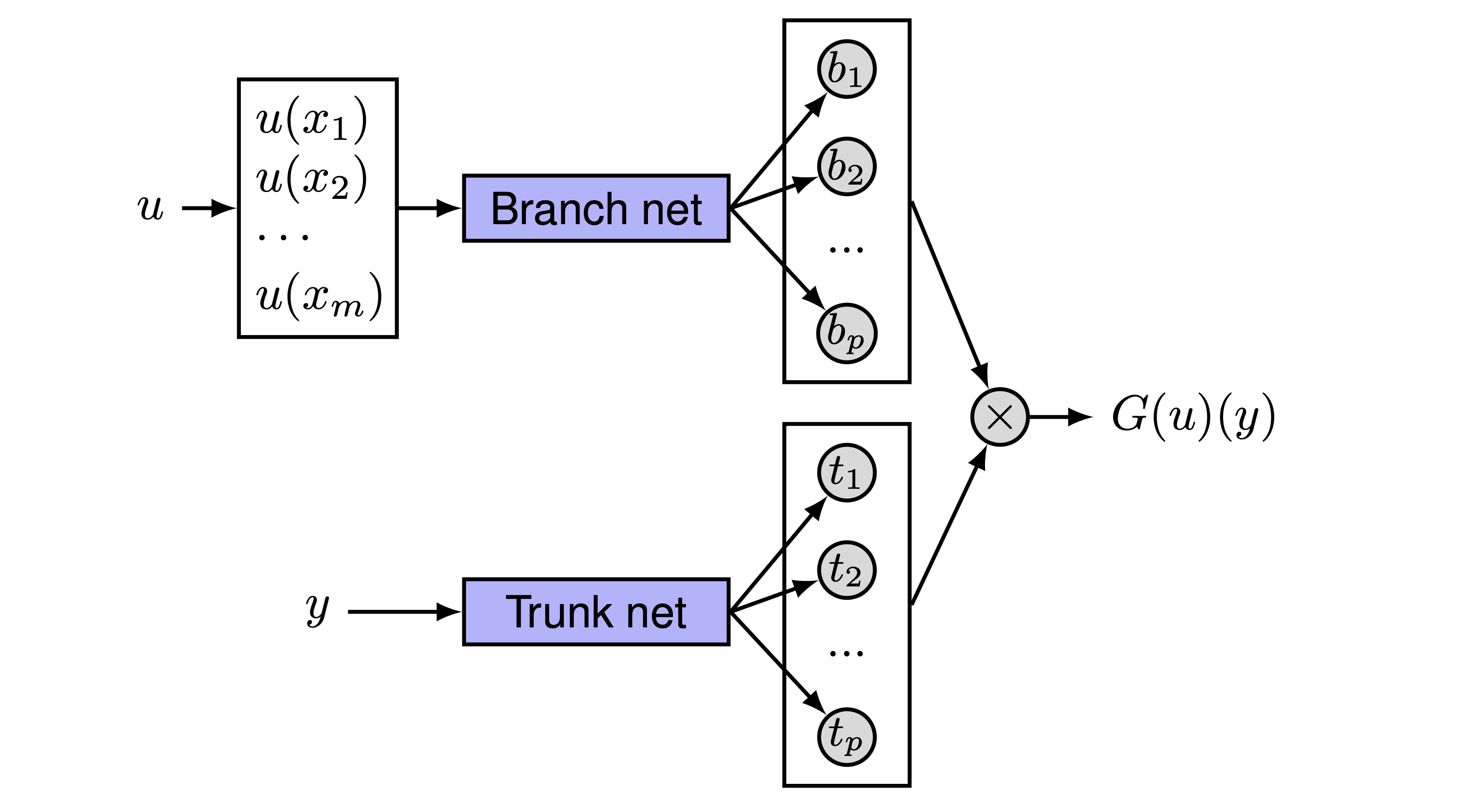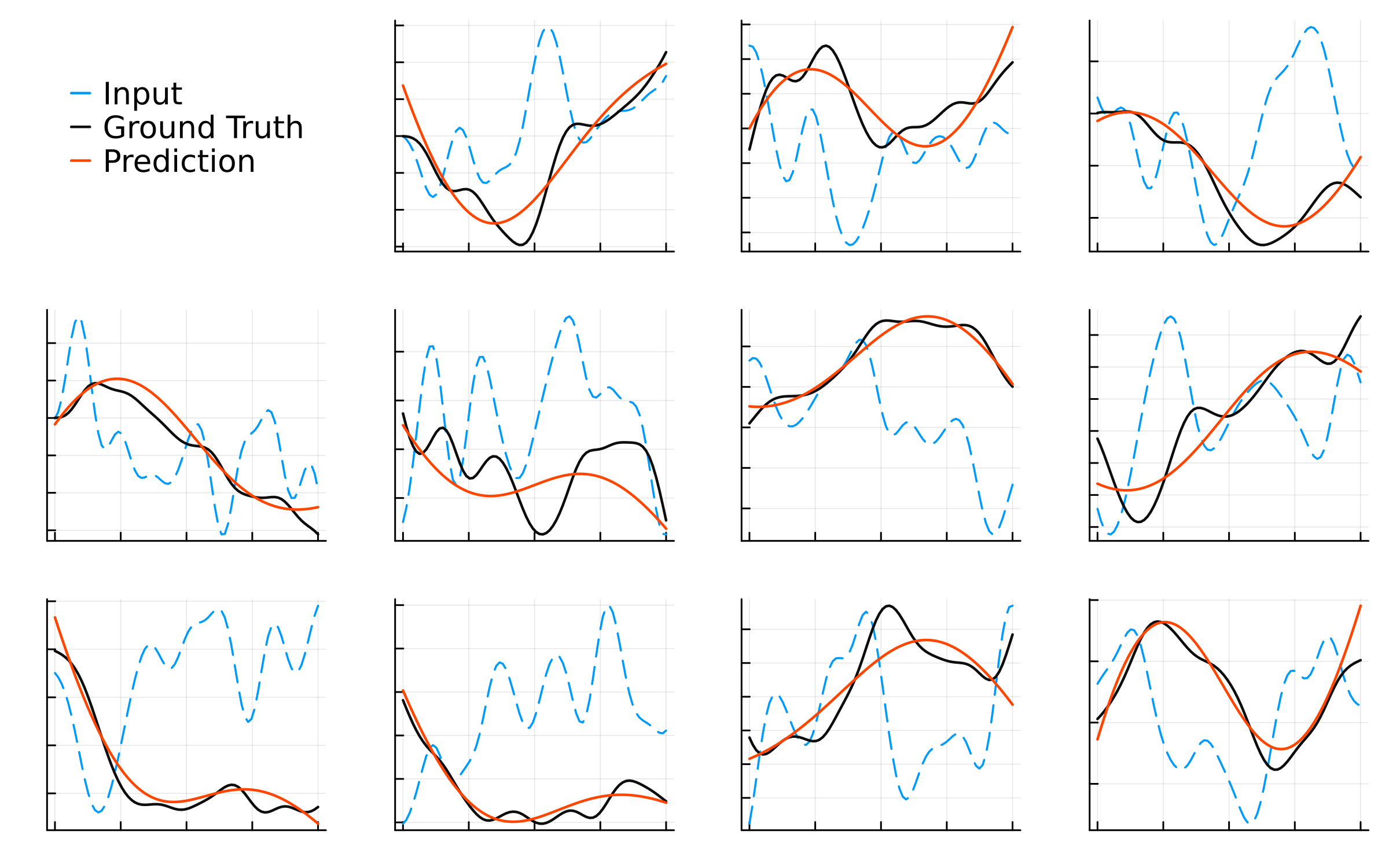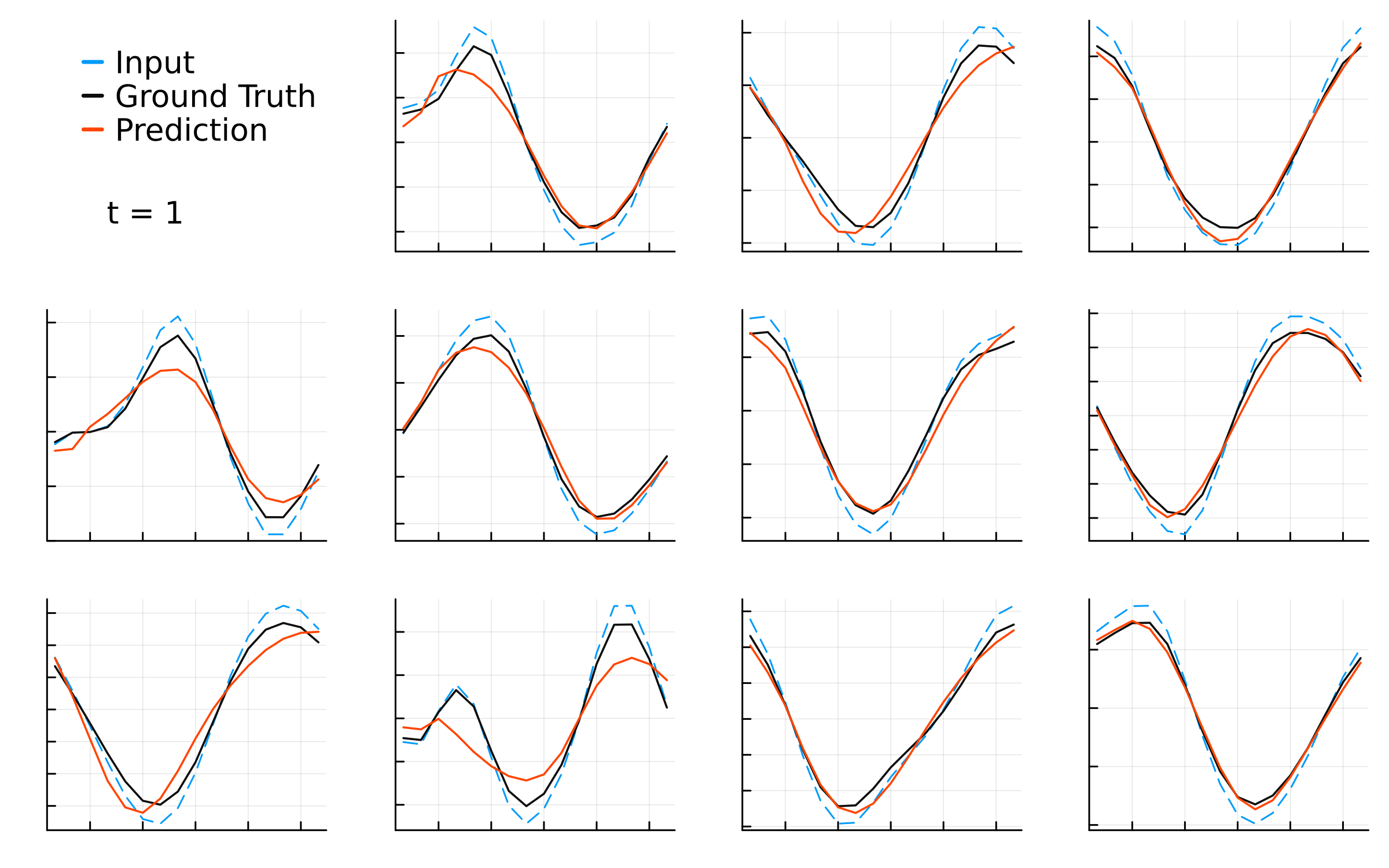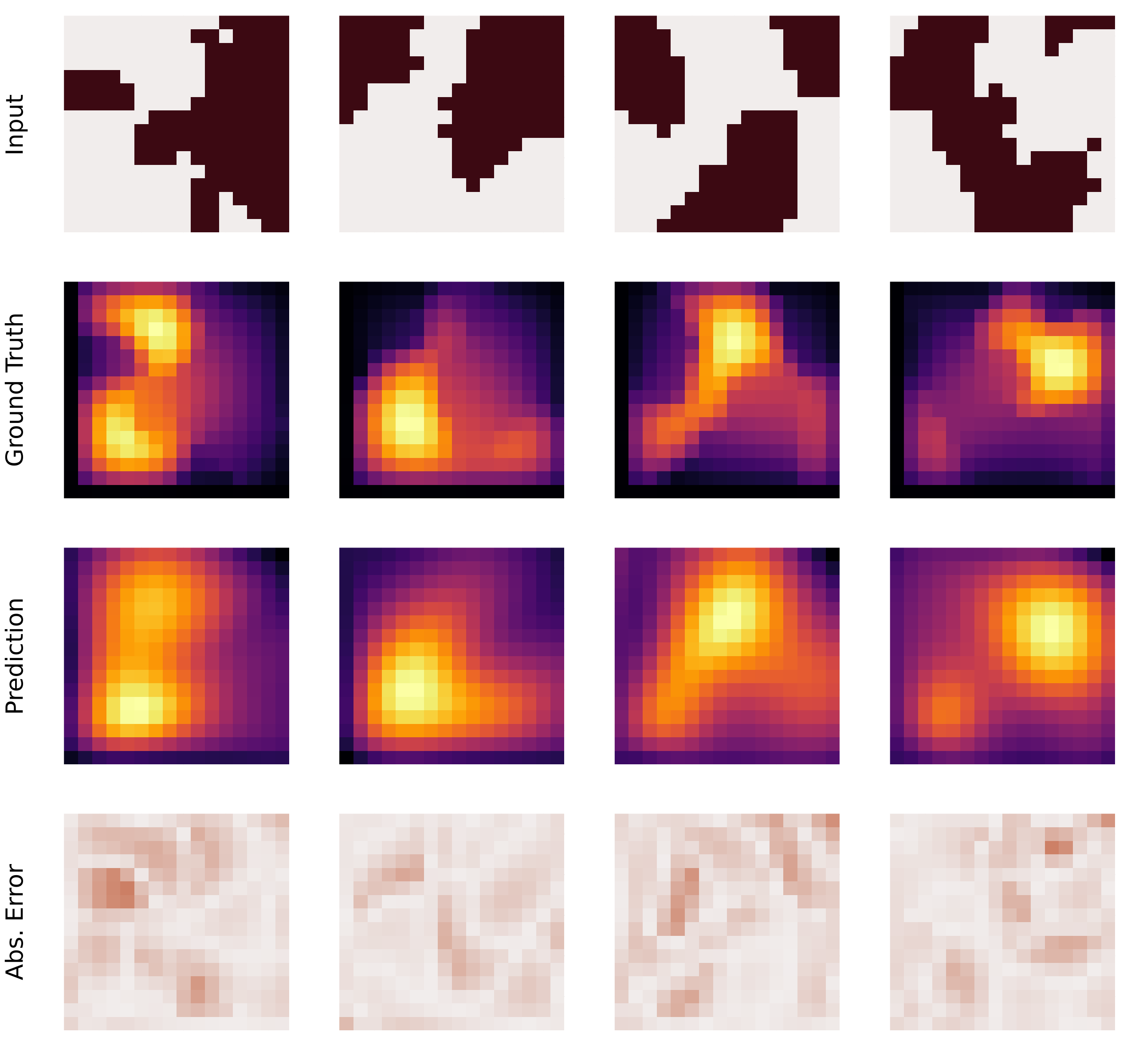DeepONet is a neural network architecture designed for operator learning, which involves mapping functions to functions. This approach is particularly effective for problems in infinite-dimensional spaces, such as solving partial differential equations (PDEs) or modeling scientific simulations.

This implementation extends the standard DeepONet architecture by adding additional layers after combining the branch and trunk network outputs.
Neural operator learning
Operator learning uses machine learning to approximate mathematical operators. Unlike traditional machine learning methods that work with finite-dimensional data, operator learning addresses transformations in infinite-dimensional spaces, making it essential for solving PDEs and other function-based tasks.
Universal approximation theorem for operators in a nutshell
https://arxiv.org/pdf/1910.03193: … \(G\) is a nonlinear continuous operator. Then for any \(\epsilon>0\), there exist parameters such that the following equation holds for all \(u\) and \(y\):
\[ \left|G(u)(y) - \sum_{k=1}^p \underbrace{\sum_{i=1}^n c_i^k \sigma\left(\sum_{j=1}^m \xi_{ij}^ku(x_j)+\theta_i^k\right)}_\text{branch} \underbrace{\sigma(w_k \cdot y+\zeta_k)}_\text{trunk} \right|<\epsilon \]DeepONet Architecture

DeepONet consists of:
- Branch Network: Processes input functions.
- Trunk Network: Processes spatial or temporal coordinates.
The outputs of these networks are combined to approximate the target operator.
Installation
To install the package:
pkg> add https://github.com/chutommy/DeepONet.jl
Usage
This extended DeepONet implementation in Julia provides a robust framework for operator learning.
model = DeepONetModel( M, 2, 20, activations;
branch_sizes = branch_sizes,
trunk_sizes = trunk_sizes,
output_sizes = output_sizes,
)
opt_state = Flux.setup(Flux.AdamW(0.0003), model)
train!(model, opt_state, train_loader, test_loader)
Refer to the provided examples for specific applications.
Examples
Integration on \([0, 1]\)
Train DeepONet to approximate the operator for integration over \([0, 1]\):
\[ F(x) = \int_0^1 f(x) \, dx \]The network learns to compute the integral of a given function \( f(x) \) over this interval. Predictions are compared with exact ground truth values.

Refer to the code here.
Burger’s Equation
Approximate the solution to the 1D Burger’s equation:
\[ \frac{\partial u}{\partial t} + u \frac{\partial u}{\partial x} = \nu \frac{\partial^2 u}{\partial x^2} \]DeepONet is trained on initial conditions to predict the solution over time.

Refer to the code here.
Darcy Flow
Learn Darcy’s law for fluid flow in porous media:
\[ \mathbf{v} = -\frac{\kappa}{\mu} \nabla p \]Given inputs like permeability (\(\kappa\)) and pressure gradient (\(\nabla p\)), the network predicts fluid velocity (\(\mathbf{v}\)).

Refer to the code here.